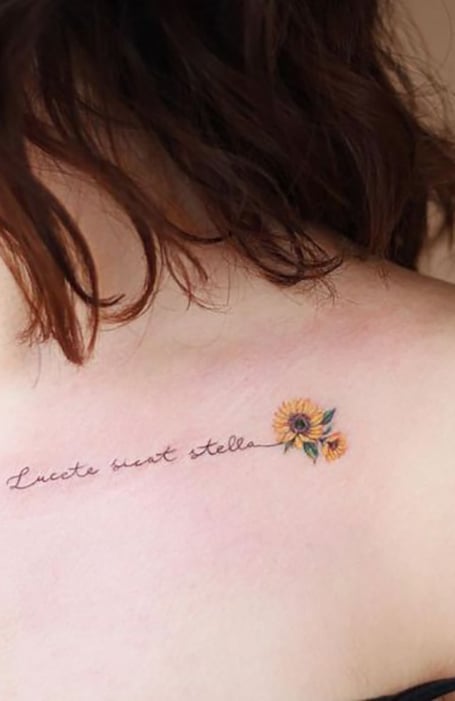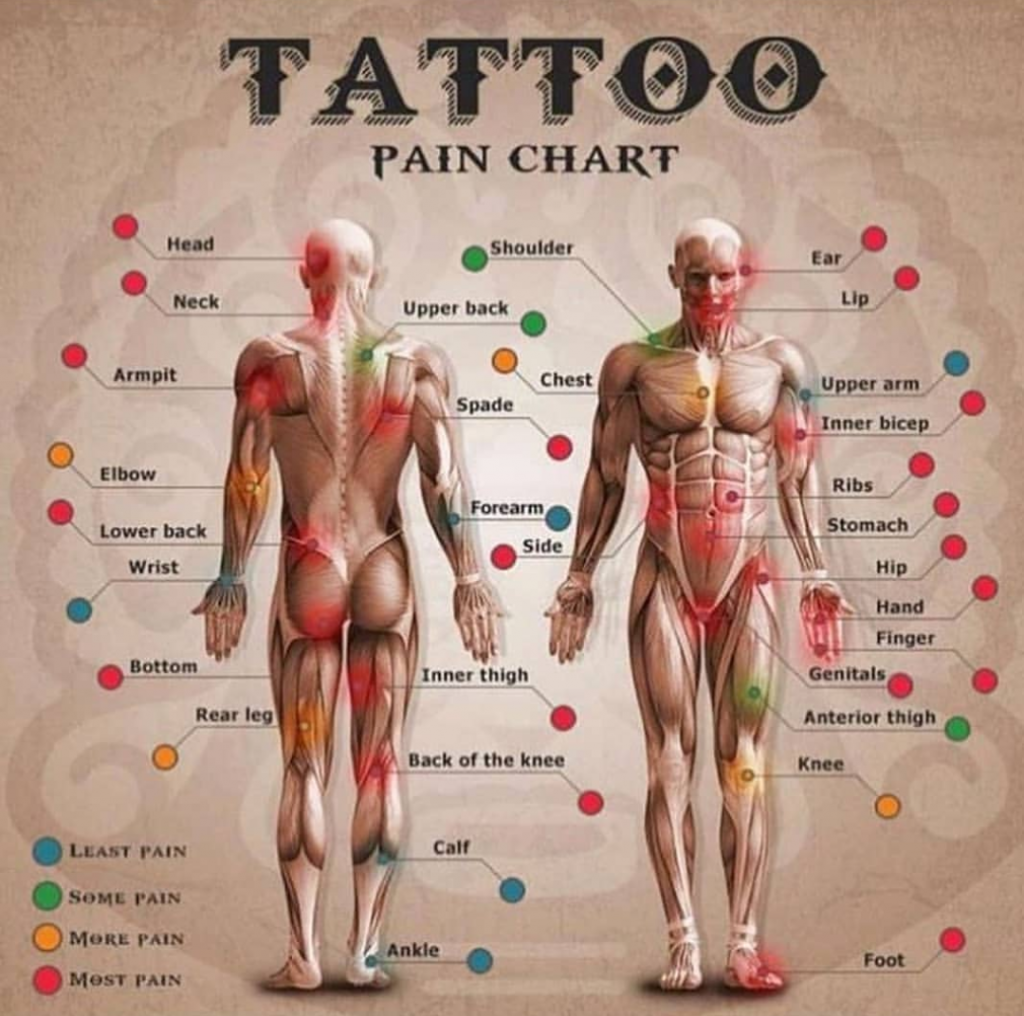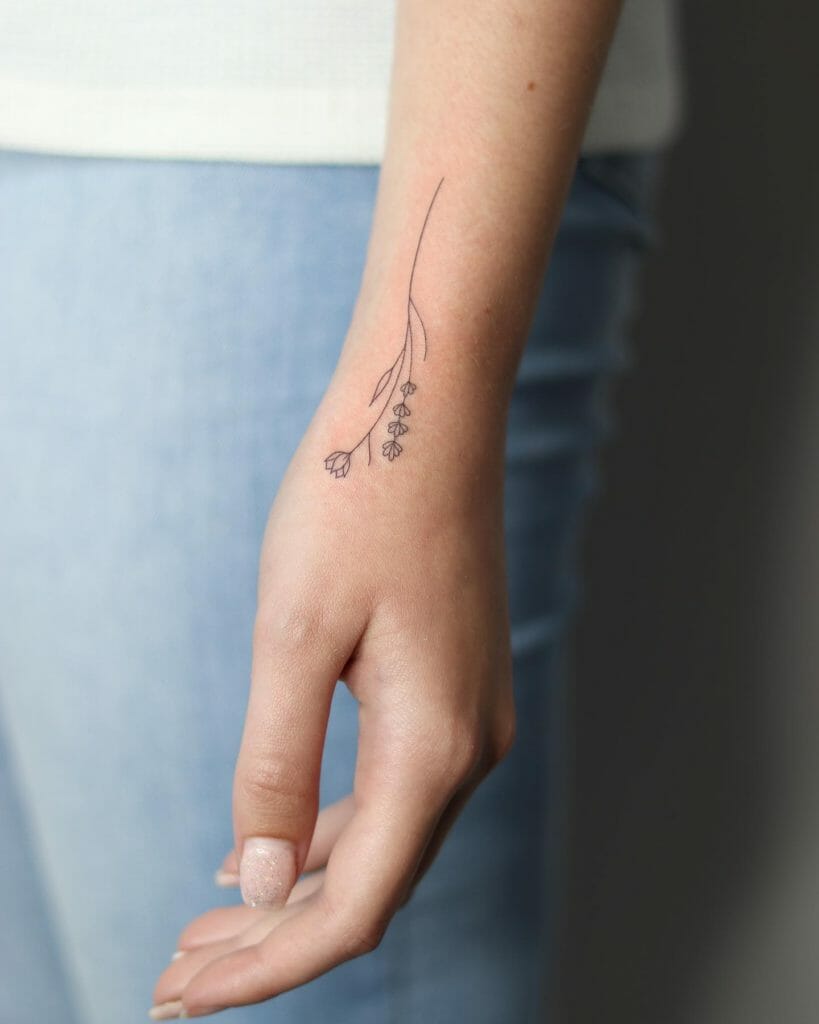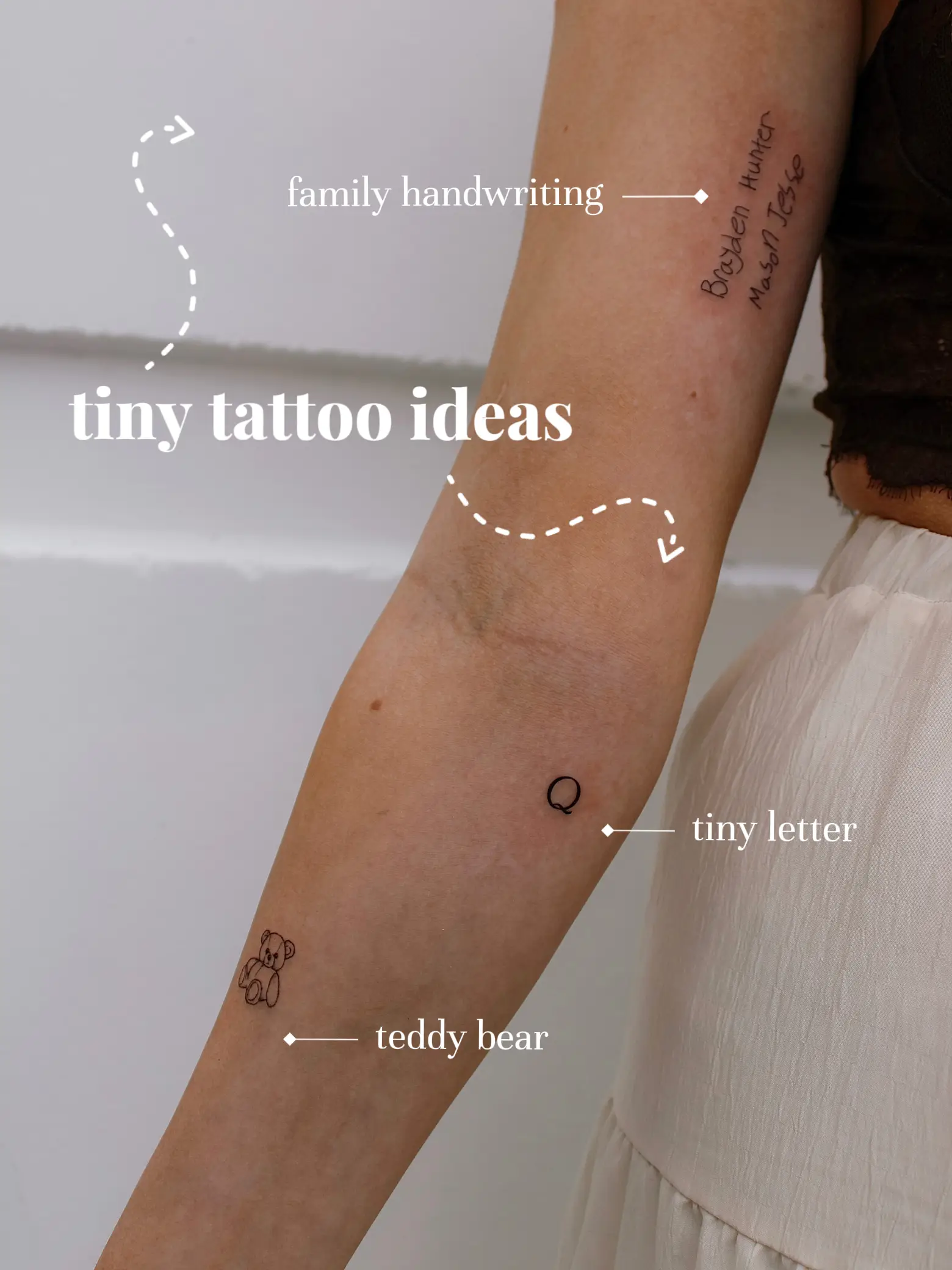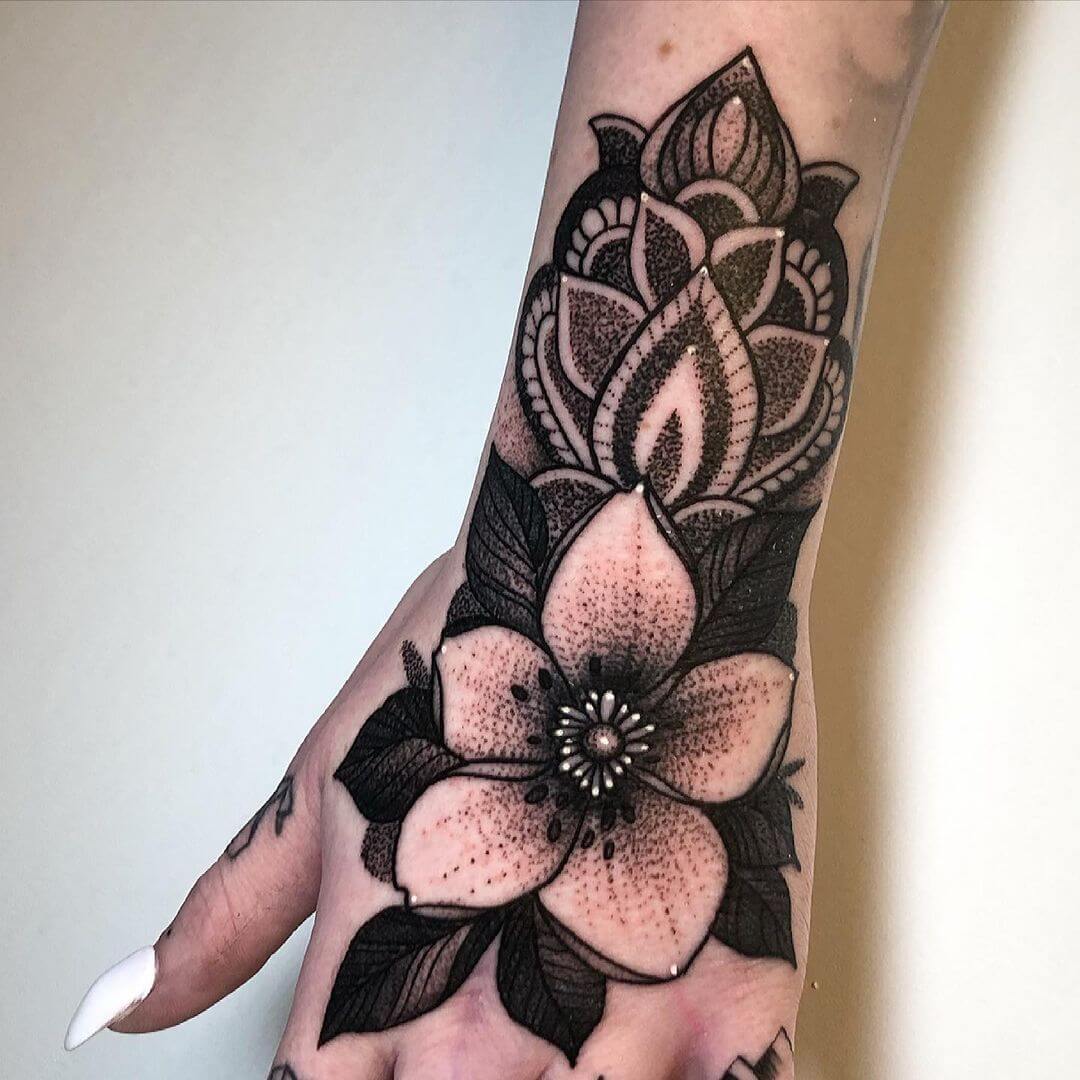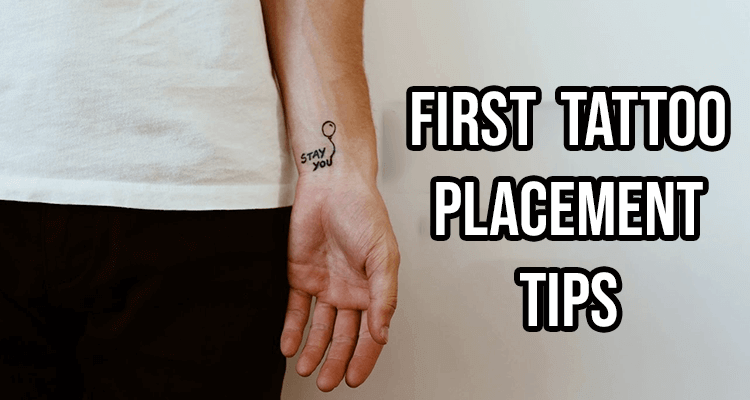
Where is the Best Place for a Small Tattoo? A Guide to Tiny Ink, Big Impact
So, you’re ready to take the plunge and get a small tattoo! Congratulations! Tiny tattoos are a fantastic way to express yourself, add a touch of personality, or commemorate something meaningful without committing to a large-scale piece. But with so many possibilities, deciding where to put your miniature masterpiece can feel overwhelming. Fear not, ink enthusiast! This guide will explore some of the most popular and visually appealing locations for small tattoos, helping you find the perfect spot to showcase your new ink.
I. The Allure of the Subtle Statement: Why Small Tattoos are Trending
Before we dive into placement, let’s quickly acknowledge why small tattoos are having a moment. They’re discreet, relatively painless (compared to larger pieces), and often more affordable. They’re also incredibly versatile, lending themselves to minimalist designs, meaningful symbols, and playful expressions. Whether it’s your first tattoo or your tenth, a small piece can be a beautiful addition to your personal story.
II. Classic Choices: Timeless Placements for Small Ink
Some locations have stood the test of time as favorites for small tattoos, and for good reason. They’re generally flattering, easily concealable, and offer a great canvas for simple designs.
A. The Wrist: A Delicate Canvas
The wrist is a classic choice for a reason. It’s easily visible, allowing you to admire your tattoo throughout the day. It’s also relatively easy to cover with long sleeves or bracelets when needed. Think delicate floral designs, meaningful initials, or simple geometric shapes. The inner wrist is particularly popular, offering a more intimate placement.
B. The Ankle: A Touch of Whimsy
The ankle is another perennial favorite, especially for those who enjoy a touch of whimsy. It’s a great spot for small animals, stars, or delicate vines. The placement is also easily hidden with socks or shoes, making it suitable for more conservative environments. Plus, imagine how cute a tiny wave or anchor would look peeking out from your sandals in the summer!
C. Behind the Ear: A Secret Gem
For a more discreet option, consider behind the ear. This placement is subtle yet alluring, offering a glimpse of ink only when your hair is pulled back. It’s a fantastic spot for small symbols, musical notes, or even a tiny bird taking flight.
III. Embracing the Edges: Unique and Unexpected Placements
Ready to step outside the box? These locations offer a more unique and unexpected canvas for your small tattoo.
A. The Fingers: Tiny Tattoos, Big Impact
Finger tattoos have become increasingly popular, although it’s important to note that they can fade more quickly than other placements due to frequent hand washing. Think single letters, tiny symbols, or minimalist designs. The side of the finger is a particularly popular choice. Be mindful of the design and placement, as finger tattoos can be more visible than others.
B. The Collarbone: A Touch of Elegance
The collarbone is a beautiful and elegant placement for a small tattoo. It’s particularly flattering for delicate designs like flowers, butterflies, or inspirational words. This placement is easily showcased with off-the-shoulder tops or dresses, adding a touch of personal style to your look.
C. The Foot: Hidden Depths
The top of the foot offers a surprisingly versatile canvas for small tattoos. It’s a great spot for meaningful symbols, quotes, or even small portraits. While the foot can be a slightly more sensitive area, the results are often worth it. Remember to consider footwear when choosing a design, ensuring it won’t rub against the tattoo and cause irritation.
IV. The Power of Symmetry: Matching Tattoos for Balance
Consider getting matching small tattoos on symmetrical body parts for a balanced and visually appealing look.
A. Shoulders: Balanced Beauty
Matching tattoos on the shoulders create a sense of balance and harmony. Think two halves of a whole, complementary symbols, or mirroring designs. This placement is particularly effective for representing relationships, such as siblings or best friends.
B. Wrists: Connected Stories
Matching tattoos on the wrists can be a beautiful way to represent a shared experience or connection. Think puzzle pieces, intertwined initials, or complementary symbols. This placement is easily visible and serves as a constant reminder of the bond you share.
C. Ankles: A Journey Together
Matching tattoos on the ankles can symbolize a shared journey or adventure. Think footprints, compasses, or coordinating designs. This placement is subtle yet meaningful, representing the path you’re walking together.
V. Considerations Before You Ink: Making the Right Choice
Before you commit to a specific placement, consider these factors:
A. Pain Tolerance: Where Does it Hurt the Most?
Pain tolerance varies from person to person, but some areas are generally more sensitive than others. Bony areas like the ribs, spine, and ankles tend to be more painful, while areas with more muscle mass, like the thighs and upper arms, are often less so.
B. Visibility: Do You Want to Show it Off or Keep it Hidden?
Consider your lifestyle and professional environment when choosing a placement. If you work in a conservative field, you might prefer a more discreet location like the ankle or behind the ear. If you’re comfortable showcasing your ink, the wrist, collarbone, or fingers might be a better choice.
C. Fading and Stretching: How Will it Look Over Time?
Certain areas are more prone to fading and stretching than others. Fingers, hands, and feet are exposed to frequent washing and friction, which can cause tattoos to fade more quickly. Areas like the stomach and upper arms can stretch with weight gain or loss, which can distort the design.
VI. Design Considerations: Making the Most of Your Space
The design of your tattoo should complement the placement you choose.
A. Size and Scale: Proportional Perfection
Ensure the size of your tattoo is proportional to the area you’re tattooing. A design that’s too large can look crowded, while a design that’s too small can get lost.
B. Shape and Flow: Following the Body’s Contours
Consider the natural curves and contours of your body when choosing a design. A design that flows with the body’s lines will look more natural and aesthetically pleasing.
C. Color and Detail: Making it Pop
The colors and level of detail in your tattoo can also impact its overall appearance. Bold colors and intricate details can make a small tattoo stand out, while simpler designs with muted colors can create a more subtle effect.
VII. Finding the Right Artist: A Crucial Step
Choosing a skilled and experienced tattoo artist is crucial for ensuring a successful outcome.
A. Portfolio Review: Seeing is Believing
Review the artist’s portfolio to get a sense of their style and skill. Look for examples of small tattoos and pay attention to the line work, shading, and overall quality.
B. Consultation: Discussing Your Vision
Schedule a consultation with the artist to discuss your design ideas, placement options, and any concerns you may have. A good artist will be able to provide valuable advice and guidance.
C. Hygiene and Safety: A Top Priority
Ensure the tattoo studio is clean, sterile, and adheres to strict hygiene standards. The artist should use disposable needles and gloves and properly sterilize all equipment.
VIII. Aftercare: Protecting Your Investment
Proper aftercare is essential for ensuring your tattoo heals properly and looks its best.
A. Cleaning and Moisturizing: The Basics
Follow your artist’s instructions for cleaning and moisturizing your tattoo. Gently wash the area with mild soap and water and apply a thin layer of fragrance-free moisturizer several times a day.
B. Avoiding Sun Exposure: Shielding Your Ink
Protect your tattoo from sun exposure, as it can cause fading and damage. Wear loose-fitting clothing or apply sunscreen with a high SPF.
C. Patience is Key: Letting it Heal
Allow your tattoo to heal completely before engaging in activities that could irritate the area, such as swimming, strenuous exercise, or wearing tight clothing.
IX. The Everlasting Appeal: A Personal Statement
Ultimately, the best placement for a small tattoo is the one that resonates with you. It’s a personal statement, a reflection of your individuality, and a piece of art that you’ll carry with you always.
X. Beyond the Body: Thinking Outside the Box
While this article primarily focuses on traditional body placements, don’t be afraid to think outside the box!
A. Behind the Lip: A Secret and Playful Option
A tattoo on the inside of your lip is a super discreet and slightly rebellious choice. It’s not for the faint of heart (some find it a bit painful), but it’s certainly unique.
B. The Nape of the Neck: A Hint of Mystery
The nape of the neck is a classic for a reason. It’s easily covered with hair, but can be revealed for a touch of intrigue.
XI. The Power of Negative Space: Letting the Skin Speak
Consider designs that incorporate negative space – the untouched skin around the tattoo. This can create a minimalist and modern look.
XII. Embracing Imperfection: The Beauty of Handmade
Don’t strive for absolute perfection. A slightly imperfect tattoo can have a unique charm and character.
XIII. Layering and Building: Adding to Your Collection
Remember, one small tattoo can lead to another! Think about how your initial piece might complement future additions.
XIV. The Importance of Research: Finding Inspiration
Spend time browsing online tattoo galleries, social media, and artist portfolios to find inspiration and discover different styles.
XV. Trust Your Gut: The Final Decision
Ultimately, the best placement for your small tattoo is the one that feels right to you. Trust your gut, choose a skilled artist, and enjoy the process!
Conclusion:
Choosing the best placement for a small tattoo is a deeply personal decision. By considering your pain tolerance, lifestyle, and desired visibility, you can find the perfect spot to showcase your new ink. Remember to work with a reputable artist, follow proper aftercare instructions, and most importantly, choose a design that resonates with you. Your small tattoo is a unique expression of your individuality, so embrace the process and enjoy the journey!
FAQs:
-
How much does a small tattoo typically cost? The cost of a small tattoo can vary depending on the size, complexity, and location of the studio. Expect to pay a minimum shop fee, which can range from $50 to $100 or more.
-
How long does it take for a small tattoo to heal? A small tattoo typically takes 2-4 weeks to heal completely. However, healing times can vary depending on individual factors and the location of the tattoo.
-
Will my small tattoo fade over time? All tattoos fade to some extent over time, but proper aftercare and sun protection can help minimize fading. Tattoos on areas that are exposed to frequent washing or friction may fade more quickly.
-
Can I get a small tattoo removed if I change my mind? Yes, tattoo removal is possible, but it can be expensive, time-consuming, and potentially painful. Laser tattoo removal is the most common method, but it may not completely remove all ink.
-
What if I have allergies? If you have sensitive skin or allergies, consult with your doctor or dermatologist before getting a tattoo. Consider asking your artist to do a small test spot to see how your skin reacts to the ink.







